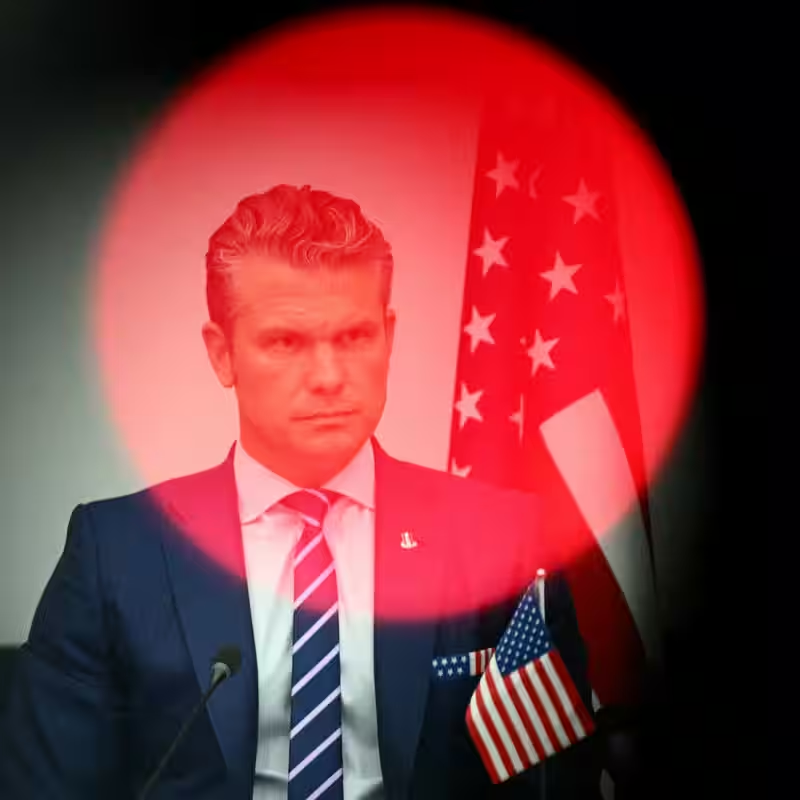Washington, D.C., October 16, 2025 — In a rare and forceful public rebuke, Defense Secretary Pete Hegseth has warned that the United States will impose “significant costs” on Russia if its actions derail ongoing peace efforts in Ukraine—just as Kyiv intensifies its request for American Tomahawk cruise missiles.
Speaking at a Pentagon briefing on Wednesday, Hegseth delivered unusually blunt criticism of Moscow, signaling a potential escalation in U.S. military and diplomatic posture as the war enters its fourth year.
Hegseth’s Russia Warning Marks Policy Shift
“If Russia chooses to walk away from serious negotiations or continues to exploit pauses for battlefield advantage, the United States will respond with consequences that go beyond rhetoric,” Hegseth said. “We are prepared to impose real costs—militarily, economically, and strategically.”
The remarks come amid growing frustration in Washington over what U.S. officials describe as Russia’s “bad-faith engagement” in recent ceasefire talks mediated by Turkey and the UAE. Intelligence reports suggest Russian forces have used recent lulls to reinforce positions in Donetsk and Zaporizhzhia.
Ukraine’s Tomahawk Missile Request Hangs in Balance
Simultaneously, Ukraine has formally requested the transfer of U.S.-made Tomahawk cruise missiles—a long-range precision weapon capable of striking targets up to 1,000 miles away. Such a move would dramatically expand Kyiv’s ability to hit Russian logistics hubs, command centers, and even airfields deep inside occupied territory.
While the Biden administration previously blocked such transfers over escalation concerns, the Trump-aligned Hegseth appears more open to the idea—provided Russia fails to honor peace commitments.
“If diplomacy fails because of Moscow’s intransigence, then Ukraine must have every tool necessary to defend its sovereignty,” Hegseth added, stopping short of confirming approval but signaling a policy review is underway.
Why Tomahawks Matter
Tomahawk missiles represent a strategic leap for Ukraine’s arsenal:
- Current Ukrainian missiles (like Storm Shadow/SCALP) have ranges of ~155 miles.
- Tomahawks can reach Crimea, Rostov-on-Don, and even parts of southern Russia.
- They are GPS- and terrain-guided, with pinpoint accuracy.
Russia has repeatedly warned that supplying such weapons would cross a “red line.” But Hegseth dismissed the threat: “Red lines don’t protect civilians in Kharkiv or children in Odesa.”
Domestic and Global Reactions
The warning has drawn mixed responses. Senate Armed Services Chair Jack Reed called it “a necessary show of resolve,” while progressive lawmakers urged caution. “We must avoid sleepwalking into direct conflict with a nuclear power,” said Rep. Pramila Jayapal.
In Moscow, the Foreign Ministry called Hegseth’s comments “dangerous and provocative,” accusing the U.S. of “fueling the fire while pretending to seek peace.”
What Comes Next?
U.S. officials say a decision on Tomahawks could come within weeks. Meanwhile, the Pentagon is reportedly finalizing contingency plans that include:
| Potential U.S. Response | Impact |
|---|---|
| Approve Tomahawk transfer | Enhances Ukraine’s strike capability; risks Russian retaliation |
| Expand sanctions on Russian energy | Targets oil export revenues; may raise global fuel prices |
| Deploy additional air defense to NATO’s east | Deters Russian aggression; escalates military presence |
| Share real-time satellite intel on Russian troop movements | Boosts Ukrainian targeting; increases U.S. involvement |
[INTERNAL_LINK:Ukraine-Russia-War] remains at a dangerous crossroads—and Hegseth’s warning may mark the moment U.S. policy shifts from containment to active deterrence.




